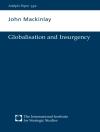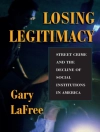Given the vast inventory of verbal and visual images of nonhuman animals—pigs, dogs, vermin, rodents, apes disseminated for millennia to debase, dehumanize, and justify the persecution of Jews, Bestiarium Judaicum asks: What is at play when Jewish-identified writers tell animal stories?
Focusing on the nonhuman-animal constructions of primarily Germanophone authors, including Sigmund Freud, Heinrich Heine, Franz Kafka, and Gertrud Kolmar, Jay Geller expands his earlier examinations (On Freud’s Jewish Body: Mitigating Circumcisions and The Other Jewish Question: Identifying the Jew and Making Sense of Modernity) of how such writers drew upon representations of Jewish corporeality in order to work through their particular situations in Gentile modernity. From Heine’s ironic lizards to Kafka’s Red Peter and Siodmak’s Wolf Man, Bestiarium Judaicum brings together Jewish cultural studies and critical animal studies to ferret out these writers’ engagement with the bestial answers upon which the Jewish and animal questions converged and by which varieties of the species ‘Jew’ were identified.
เกี่ยวกับผู้แต่ง
Jay Geller is Professor of Modern Jewish Culture at Vanderbilt Divinity School and the Vanderbilt University Jewish Studies Program, and has also taught at the University of Vienna, Bryn Mawr College, Princeton University, Rutgers University, Swarthmore College, and Wesleyan University. He is the author of On Freud’s Jewish Body: Mitigating Circumcisions (2007), The Other Jewish Question: Identifying the Jew and Making Sense of Modernity (2011), and Bestiarium Judaicum: Unnatural Histories of the Jews (2018), all from Fordham University Press; and the co-editor of Reading Freud’s Reading (New York University Press, 1994).












